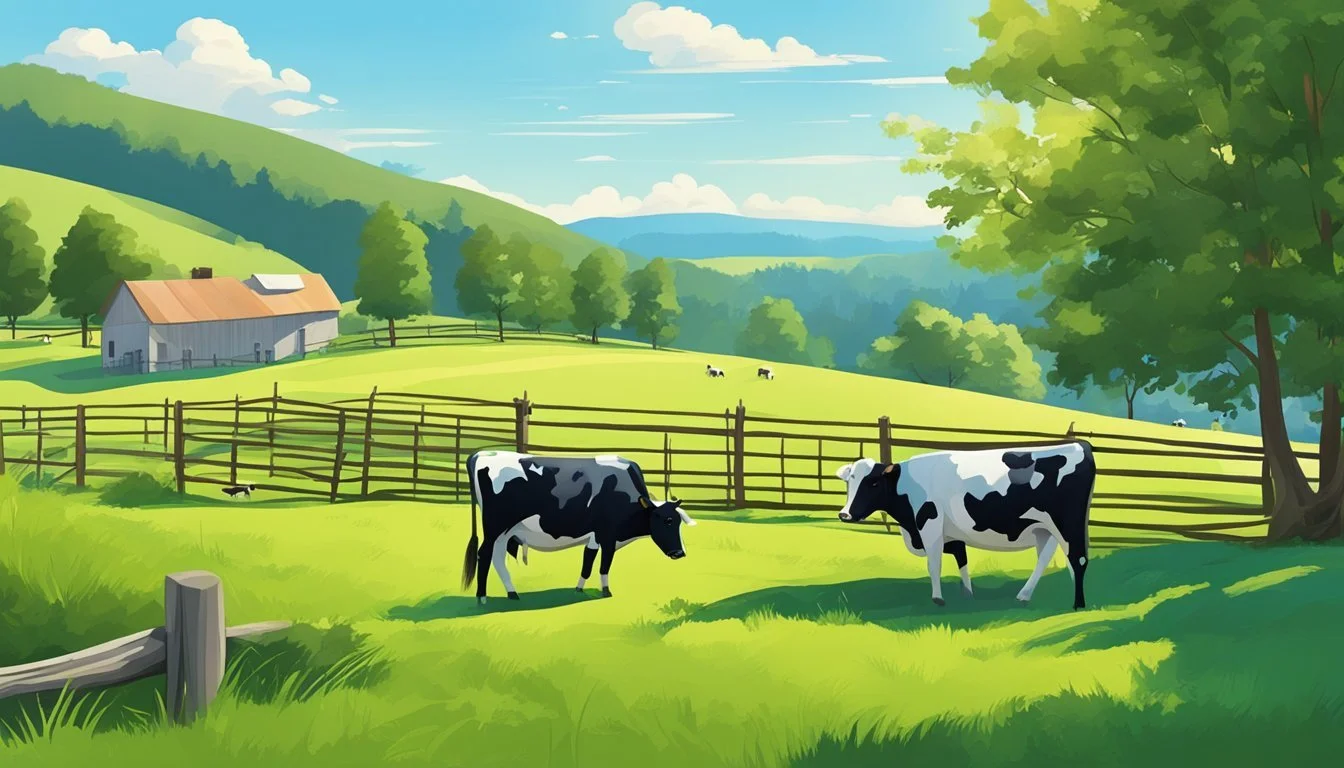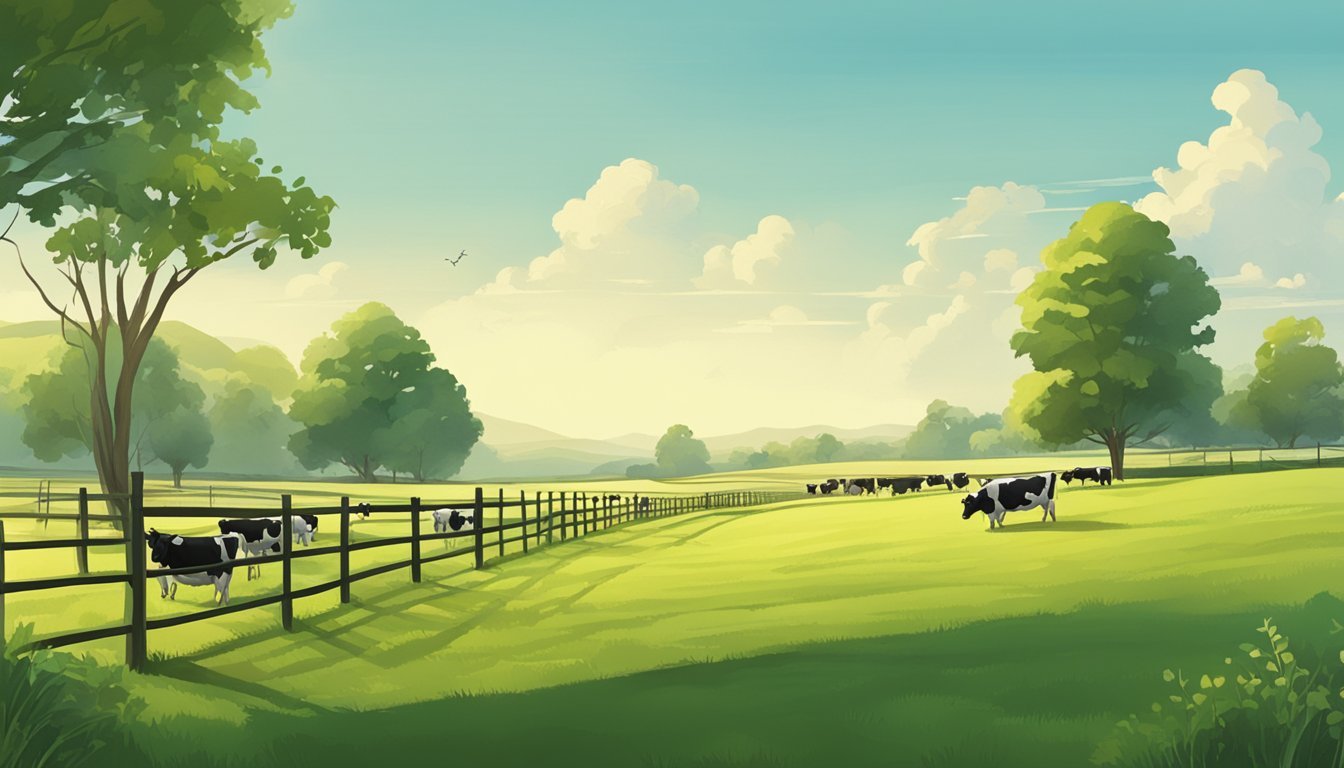Stocking Rate Georgia
Determining Your Land's Cow Capacity Per Acre
Determining the appropriate stocking rate for cattle is a critical aspect of managing pastures in Georgia. The stocking rate is essentially the number of cows that a parcel of land can sustainably support. It's a balance between the forage availability and the nutritional needs of the livestock. In Georgia, the stocking rate can vary greatly depending on factors such as soil type, pasture management, forage type, and rainfall patterns.
For property owners in Georgia looking to optimize their land for cattle grazing, understanding the local forage production is key. This varies throughout the state, with different areas being able to support varying numbers of cows per acre. Stocking rates are not a one-size-fits-all figure and can range from 1 to 2 cows per acre, depending on the quality of the pasture and how well it is managed. The ultimate goal is to maximize production without compromising the health of the grasslands or the welfare of the cattle.
Making an accurate estimation involves considering the weight of the cows, as it affects forage intake rates, and the carrying capacity of the land, which is the maximum number of animals the land can support without environmental degradation. For instance, a 1,000-pound cow may require approximately 2 acres. Adjustments are made for larger or smaller animals based on their relative intake needs. It's important to note that local conditions, such as in the Sierra Foothills, may demand more land per cow due to differences in forage availability. Hence, conducting a localized assessment provides the most accurate information for maintaining a sustainable stocking rate on a property in Georgia.
Understanding Stocking Rates
Stocking rates are essential in ensuring the sustainability of grazing lands and the productivity of livestock. This section unpacks the concept, its importance, and the fundamental principles of calculating stocking rates accurately.
Defining Stocking Rate
The stocking rate refers to the number of livestock units that can be sustainably grazed on a given area of land. It is typically measured as the number of animal units (AUs) per acre. An animal unit is defined as one 1,000-pound cow or its equivalent, with adjustments made for different types and sizes of livestock.
Importance of Correct Stocking Rates
Applying correct stocking rates is crucial for the health of the forage, livestock, and the overall ecosystem. Overstocking can lead to overgrazing, soil erosion, and reduced forage quality, while understocking may result in increased weed growth and wasted forage resources.
Stocking Rate Calculation Basics
To calculate cattle stocking rate, one must consider various factors such as animal size, forage type, and climate. The process involves:
Estimating forage availability in pounds per acre.
Determining the daily forage intake rate of the livestock (typically 2.5% of body weight).
Calculating the total number of animal units the land can support by dividing total forage by required forage per animal unit.
Example Calculation
Component Calculation Forage Availability (lbs) Total available forage per acre Daily Intake Rate (%) Livestock body weight x 2.5% Animal Units (AUs) Daily intake/Forage per AU
For instance, if the available forage is 25 pounds per AU, and a cattle weighing 1,150 pounds requires 2.5% intake, there would be 1.16 AUs per cow (29 pounds intake per day ÷ 25 pounds forage per AU).
Forage and Pasture Management
Managing forage and pasture is vital for determining how many cows a property can support in Georgia. It involves understanding the forage types, their production factors, and methods for improving pasture quality to support a suitable stocking rate.
Assessing Forage Types
In Georgia, properties often feature a mix of forage species such as Bermuda grass, tall fescue, and ryegrass. Each species has unique nutritional profiles and growth patterns impacting stocking rates. For instance, Bermuda grass thrives in warm seasons offering high-quality forage, while tall fescue, a cool-season grass, provides forage during other parts of the year.
Forage Production Factors
Several factors affect forage production, including:
Climate: Georgia's climate can affect growth rates, with higher temperatures and sunlight in summer promoting growth of warm-season forages.
Soil fertility: Optimal levels of nitrogen, phosphorus, and potassium are critical for healthy forage.
Water availability: Adequate rainfall or irrigation is necessary for forage growth, with drought conditions limiting productivity.
Improving Pasture Quality
Improving pasture quality requires regular maintenance. Key strategies include:
Rotational grazing: Allows pastures to recover and maintain high-quality forage.
Fertilization: Soil tests should dictate the appropriate fertilization regimen.
Weed control: Reducing weed competition can improve forage availability and quality.
By adhering to these management practices, farmers can maximize the number of cows per acre their property can support in Georgia.
Stocking Strategies
Effective stocking strategies are essential to maximize pasture utilization while maintaining the health of the cattle and the land. It involves understanding the carrying capacity of the land, and incorporating practices to avoid overstocking, which leads to overgrazing and can degrade pasture health.
Rotational Grazing
Rotational grazing is a grazing management strategy where livestock are moved between pastures, or paddocks, to allow forage in previously grazed paddocks to recover before being grazed again. This method offers several benefits for pasture-based systems:
Enhances grass regrowth and pasture longevity.
Spreads manure more uniformly, which can reduce the need for chemical fertilizers.
Allows for more precise control of grazing intensity to prevent overgrazing.
Supplemental Feeding
Supplemental feeding refers to providing additional nutrients to livestock, especially during periods when pasture forage cannot meet the animals' nutritional requirements. This can involve:
Hay, silage, or grains to supplement dietary needs during periods of forage scarcity.
Minerals and vitamins to address specific deficiencies in the forage available on the property.
Preventing Overgrazing
Preventing overgrazing is a key goal of effective grazing management. Maintaining a balance between forage supply and animal demand is critical:
Assess and monitor forage growth and adjust animal numbers or grazing duration accordingly.
Implement rest periods for pastures to allow grass to recover to an appropriate height before being grazed again.
Environmental Considerations
When considering how many cows a property in Georgia can support, environmental factors play a pivotal role. They affect forage availability, soil health, and ultimately the sustainability of grazing practices.
Climate Impact on Grazing
Georgia's climate, characterized by hot summers and mild winters, directly influences grazing patterns. Elevated temperatures and humidity levels during summer can reduce forage quality and availability. It's crucial to understand that:
Temperature: Intense heat can stress pastures, leading to decreased nutritional value.
Rainfall: Adequate and well-distributed rainfall is vital for maintaining healthy forage growth throughout the grazing season.
Soil Conditions and Fertility
Soil type and fertility are key determinants of a pasture's productivity. In Georgia, soils range from sandy loams to heavy clays, each with different drainage properties and nutrient-holding capacities. Key points include:
Sandy loams may require more frequent fertilization due to lower nutrient retention.
Heavy clays, while more nutrient-rich, often necessitate proper drainage solutions to prevent waterlogging and promote root health.
Managing Drought Conditions
Drought can severely impact Georgia's grazing systems. Strategies for managing drought conditions need to consider:
Soil Moisture Conditions: Regular monitoring helps anticipate irrigation needs and adjust stocking rates.
Forage Species Selection: Choosing drought-resistant forages can reduce the vulnerability of pastures during low rainfall periods.
Optimizing Herd Health and Nutrition
In Georgia, optimizing herd health and nutrition necessitates a precise understanding of cattle's nutritional requirements and the quality of forage available. Proper herd management practices are crucial to support the desired stocking rate while maintaining healthy beef cattle.
Nutritional Requirements
Beef cattle's nutritional needs vary based on their age, body weight, and production stage. It is essential to provide sufficient nutrients to meet the demands for maintenance, growth, and reproduction. For example, a 1,000-pound cow requires around 2% of its body weight in forage daily.
Maintenance: Adult cattle require a diet that sustains their body weight.
Growth: Growing animals need additional nutrients for developing tissues.
Reproduction: Nutrient demands increase during pregnancy and lactation.
Forage Quality and Consumption
Forage quality directly affects the herd's nutrition; thus, it must be frequently assessed. Forage demand varies with the quality of available pasture, as higher-quality forages are more digestible and provide more nutrients.
Crude Protein (CP): Adequate levels are necessary for growth and health.
Total Digestible Nutrients (TDN): Reflects the energy content of the forage.
Forage Quality Table
Quality Indicator Ideal Range CP (%) 7-12 TDN (%) 55-65
Monitoring forage consumption ensures that cattle intake meets their nutritional needs and supports the calculation of an accurate stocking rate.
Herd Management Practices
Best management practices for herd health include regular health checks, vaccinations, and parasite control. These practices are part of a comprehensive approach to herd management that contributes to the wellbeing of beef cattle and the sustainability of the stocking rate.
Health Checks: Regular monitoring of cattle for signs of illness.
Vaccinations: Preventative measures against common bovine diseases.
Parasite Control: Essential to prevent the spread of internal and external parasites.
By integrating nutritional planning with high standards of herd management, cattle producers in Georgia can ensure their herds remain healthy and productive, which is vital for supporting an economically viable stocking rate.
Economic Aspects of Stocking
Effective management of stocking rates is a crucial determinant of the economic viability of a livestock operation in Georgia. It impacts both efficiency and profitability, shaping the financial outcome for producers.
Assessing Profitability
To assess the profitability of stocking rates, producers must balance the number of livestock with the forage availability to maximize weight gain and minimize feed costs. The USDA Economic Research Service provides guidelines for this, but it varies locally. For instance, if forage intake rate is 2.5% of body weight and one acre yields 25 pounds of forage daily, a 1,000-pound cow would require 2 acres. As cow weight increases, so does the need for acreage to maintain efficiency.
Example calculation for a 1,150-pound cow:
Forage intake per day:
1,150 pounds x 2.5% = 28.75 poundsAnimal units per cow:
28.75 pounds / 25 pounds per acre = 1.15 animal units per cow
Costs of Improper Stocking
Improper stocking rates can have several economic implications for producers. Overstocking leads to resource depletion that can necessitate additional feed costs and reduce weight gain, while understocking results in under-utilized forage, wasting potential profits.
Consequences of overstocking:
Increased feed costs due to supplemental feeding.
Reduced weight gain per head, affecting sales.
Consequences of understocking:
Under-utilization of available forage.
Missed opportunity to maximize profits from land resources.
Practical Application and Record Keeping
Calculating the correct stocking rate is vital for sustainable pasture management. This section details how to determine carrying capacity, monitor and adjust stocking rates for Georgia's conditions, and underscores the importance of diligent record keeping.
Determining Carrying Capacity
The carrying capacity of a property in Georgia depends on a variety of factors, including total land area and the quality of forage available. Table 1 should be created by the farmer to assess available forage against livestock needs throughout the grazing season. This table can include columns such as "Total Land Area (acres)", "Forage Type", "Forage Availability (lbs/acre)", and "Cattle Requirements (lbs/head/day)" to provide a clear snapshot of resources.
Monitoring and Adjusting Stocking Rates
It is crucial to continually assess the grazing period and cattle per acre to sustain a healthy pasture. If Georgia's grazing season is 6 months, a basic calculation of head per acre is needed, followed by monitoring the grazing impact. Real-time adjustments should be made based on observed pasture conditions and forage growth rates. To maintain optimal pasture conditions, monitoring must be done regularly, ideally on a weekly basis during active grazing.
Importance of Record Keeping
Consistent record keeping is essential to manage a property successfully. Detailed records help track the effectiveness of the stocking rate and grazing management over time. These records could include the number of cattle per acre, adjustments made during the grazing period, forage yield per acre, and climate conditions throughout the grazing season. Precision in record keeping facilitates informed decision-making and helps to mitigate the risks of overgrazing.
Regional Considerations for Georgia
In Georgia, the appropriate stocking rate varies greatly depending on the specific region, due to differences in climate, topography, and forage type. These factors determine the carrying capacity of the land—that is, how many cows the land can support without becoming overgrazed.
Mountain Region of Georgia
The mountain region of Georgia is characterized by cooler temperatures and varying topographies, affecting forage growth and type. Properties in this area commonly find that cool-season grasses such as fescues and bluegrasses dominate. Due to the rugged terrain and potentially less forage availability, stocking rates may be lower in comparison to more level and fertile regions of the state. Specific plant species conducive to this region's grazing include orchardgrass and Kentucky bluegrass, which are more tolerant of the cooler conditions in the mountains.
Southeast Georgia Pastures
In contrast, pastures in Southeast Georgia benefit from a warmer climate conducive to growing bermudagrass, bahiagrass, and other warm-season forages. These grasses are highly productive in terms of biomass but require proper management to maintain quality and prevent overgrazing. The stocking rates can be higher here due to the typically longer growing season and generally flatter land, which tends to support more animals per acre. However, proper rotation and grazing management are crucial to avoid excessive wear on the pastures.
Forage Type: Warm-season grasses
Typical Plant Species: Bermudagrass, Bahiagrass
It is important for managers to adjust stocking rates based on ongoing observations and forage availability to ensure sustainable pasture use and cattle health.






